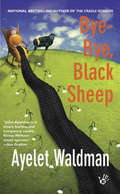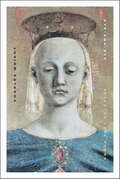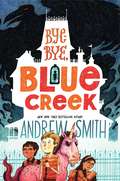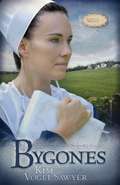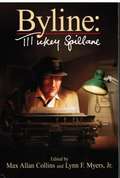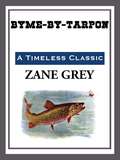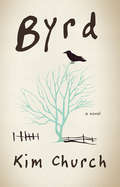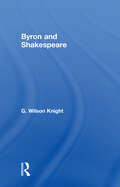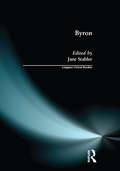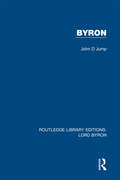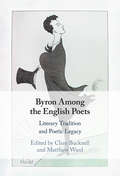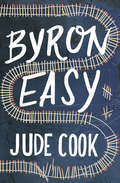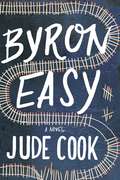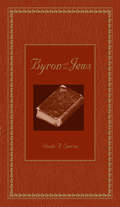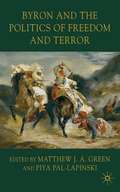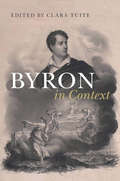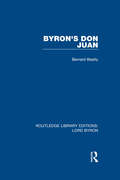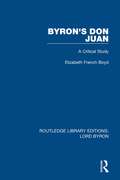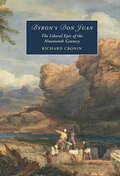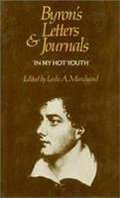- Table View
- List View
Bye-Bye, Black Sheep (Mommy-track #7)
by Ayelet WaldmanWith her "quirky, engaging characters, sharp wit, and vivid prose," Ayelet Waldman brings a new addition to her Mommy-Track Mysteries, Teeter-tottering on the brink of sanity, Juliet Applebaum not only solves crimes, she does it with diapers, bottles, and...oh yes, three kids in tow. This time she'll play hide-and-seek with some of South Central's seediest denizens. But Their fledgling detective agency has spread its wings-and now partners Juliet Applebaum and Al Hockey, once in the hole, are finally flying high. A Hollywood lawyer uses them regularly to clean up after some of his less-than-discreet celeb clients. They see people come through the doors of their garage-turned-office, seeking defense investigation. They also see insurance investigation cases. But Juliet and Al are about to find out, they ain't seen nothin' yet... Heavenly has come to Juliet with a story too good for any detective with a conscience to turn down. Her sister, an addict and streetwalker, has turned up dead-and the police couldn't care less. With any luck-and with plucky gut using all she can-Heavenly will learn about her sister's death and, if possible, bring the killer to justice. But it's hard going.
Bye-and-Bye: Selected Late Poems
by Charles WrightThe acclaimed collection by the Pulitzer Prize–winning poet whose work is “conceived in a manner that never ceased to astonish” (Helen Vendler, The New Republic).Over the course of nineteen collections of poems, former US Poet Laureate Charles Wright has built “one of the truly distinctive bodies of poetry created in the second half of the twentieth century” (David Young, Contemporary Poets).Bye-and-Bye, which brings together selections from Wright’s more recent volumes—including the entirety of Littlefoot, Wright’s moving, book-length meditation on mortality—showcases the themes and images that have defined his mature work: the true affinity between writer and subject, human and nature; the tenuous relationship between description and actuality; and the search for a truth that transcends change and death.Winner of the 2013 Bollingen Prize,. Bye-and-Bye is a wonderful introduction to the poetic vision of one of America’s finest and best-loved poets.
Bye-bye, Blue Creek (Sam Abernathy Books)
by Andrew SmithSam Abernathy prepares to leave home for the first time in this charming follow-up to award-winning author Andrew Smith&’s The Size of Truth.Vampires have just moved in to the haunted house next door. All twelve-year-old Sam Abernathy wanted to do was make the most of his last few weeks in Blue Creek before he has to say goodbye. Goodbye to the well he fell in eight years ago; goodbye to cooking at Lily Putt&’s snack bar; goodbye to his overdramatic best friend, Karim; goodbye to unsweetened iced tea at Colonel Jenkins&’s Diner every Saturday with Bahar (who he does not have a crush on); goodbye to his old life. But the arrival of the Monster People throws a wrench into his plans. Things only get worse when the new family hires Bahar to babysit their child, Boris, who is almost certainly a cannibal. And then—scariest of all—they employ Sam&’s catering services. He can&’t possibly say no. If he doesn&’t survive the summer, Sam might not have to say bye-bye to Blue Creek at all.
Bygones (Sommerfeld Trilogy #1)
by Kim Vogel SawyerTWENTY-THREE YEARS AGO, Marie Koeppler left her Old Order Mennonite family and faith to begin an exciting new life with Jep Quinn. But her husband's early death cut her dreams short. Widowed and alone, Marie makes just enough to survive and raise her daughter, Beth, in the outside world. Ensnared by life's rhythms, Marie has but a faint memory of her former life in Sommerfeld, Kansas. That is, until ex-beau Henry Braun suddenly shows up, bearing news: An elderly aunt has died, leaving Beth a house and small café back home. But there's a hitch. To claim the inheritance, Beth must temporarily reside in Sommerfeld. Reluctantly, Marie and Beth return to the Mennonite community Marie had once abandoned. But soon after their arrival, a chain of mysterious thefts raises the community's suspicions against the 'outsiders.' Can Marie prove their innocence, or will she be forced to flee once more? Henry Braun thought he'd gotten his love for Marie out of his system but soon begins to wonder if she's stolen more than his heart. When it's all said and done, can Henry and Marie let bygones be bygones, or has their love been doomed from the start?
Byi Le Tintihweni: UEB Uncontracted (African Language Literature Ser.)
by C. M. LubisiNtlangu loyi wu hlamusela hi ta vutomi bya Profesa Xirilo loyi a a ri mudyondzisi eYyunivhesiti ya N'walungu. Profesa Xirilo a a ri ni swigango swo tala swa machudeni eYyunivhesiti kutani u hetelerile a ri ni xitsongwatsongwana xa HIV.
Byline: Mickey Spillane
by Max Allan Collins Mickey Spillane Lynn F. Myers Jr.This book offers two Mike Hammer cases in short story form that later appeared as novels, the transcript of a Mike Hammer playlet, 14 articles by Spillane and more.
Byme-By-Tarpon
by Zane GreyZane Grey (January 31, 1872 - October 23, 1939) was an American author best known for his popular adventure novels and stories that presented an idealized image of the American frontier, including the novel Riders of the Purple Sage, his bes selling book. This is one of his stories.
Byrd
by Kim Church#147;Brilliant writing#151;lively and heartbreaking at every turn. ”#151;Jill McCorkle, author of Life After Life In this debut novel, 33-year-old Addie Lockwood bears and surrenders for adoption a son, her only child, without telling his father, little imagining how the secret will shape their lives. Through letters and spare, precisely observed vignettes, Byrd explores a birth mother’s coming to make and live with the most difficult, intimate, and far-reaching of choices. Kim Church’s stories have appeared in Shenandoah, Painted Bride Quarterly, Flash Fiction Forward, and elsewhere. A Pushcart Prize nominee, she has received fellowships from the North Carolina Arts Council, the Virginia Center for the Creative Arts, the Millay Colony, and Vermont Studio Center . She lives in Raleigh , North Carolina with her husband, artist Anthony Ulinski. Byrd is her first novel.
Byrd's Eye View
by Eve MortonRhea Florakis is a detective in the Magical Crimes Unit of the Neon City, a futuristic landscape where witches try to evade their taxes with counterfeit coins, and Madams run brothels full of high tech sex bots. When Rhea finds out that the notorious Tonya Byrd (A.K.A. Mrs. Nobody) is about to be released from prison, she springs into action. Tonya Byrd already evaded Rhea once -- but there are still two weeks left before an old statute of limitations runs out, and Rhea wants to find Tonya before anyone else does.Meanwhile, Tonya Byrd only has three things on her mind when she steps out of prison: food, sex, and a yet to be named "good stuff" that will keep her satisfied all night long. When she is apprehended by Rhea and her bumbling partner, Murphy, she realizes she must put her own freedom on hold and complete one last mission. With some fancy new VR tech to help her out, the next job -- defeating an underground shipment of human cargo -- should be easy.It is, of course, much harder than both Tonya and Rhea ever imagined. When the smoke clears, will they be able to put to mend their seven years apart? Or will the stray kiss they get in a heated chase be all they can ever have together?
Byron & Shakespeare - Wils Kni
by Wilson KnightIn this volume, G. Wilson Knight deals with the "superabundance of analogies between Byron and Shakespeare" through analysis and literarty criticism of poetry, sonnets and essays.
Byron (Longman Critical Readers)
by Jane StablerOften seen as the exception to generalisations about Romanticism, Byron's poetry - and its intricate relationship with a brilliant, scandalous life - has remained a source of controversy throughout the twentieth century. This book brings together recent work on Byron by leading British and American scholars and critics, guiding undergraduate students and sixth-form pupils through the different ways in which new literary theory has enriched readings of Byron's work, and showing how his poetry offers a rewarding focus for questions about the relationship between historical contexts and literary form in the Romantic period.Diverse and fresh perspectives on canonical texts such as Don Juan, Childe Harold's Pilgrimage and Manfred are included together with stimulating analyses of less well-known narrative poems, lyrics and dramas. A clearly structured introduction traces key developments in Byron criticism and locates the essays within wider debates in Romantic studies. Detailed headnotes to each essay and a guide to further reading help to orientate the reader and offer pointers for further discussion.The collection will enable students of English literature, Romantic studies and nineteenth-century cultural studies to assess the contribution that different critical methodologies have made to our understanding of individual poems by Byron, as well as concepts like the Byronic hero and evolving definitions of Romanticism.
Byron (Routledge Library Editions: Lord Byron #4)
by John D. JumpFirst published in 1972. John D. Jump, a leading authority on Byron and the Romantic period, here gives an account of Byron’s literary achievement in relation to the age of revolutions in which he lived and in relation to his own character and personal circumstances. Professor Jump focuses upon the major poems and also discusses Byron’s prose, principally his letters and journals. In doing so he covers all of the important aspects of Byron’s work.
Byron Among the English Poets: Literary Tradition and Poetic Legacy
by Matthew Ward Clare BucknellFor Byron, poetic achievement was always relative. Writing meant dwelling in an echo chamber of other voices that enriched and contextualised what he had to say. He believed that literary traditions mattered and regarded poetic form as something embedded in historical moments and places. His poetry, as this volume demonstrates, engaged richly and experimentally with English influences and in turn licenced experimentation in multiple strands of post-Romantic English verse. In Byron Among the English Poets he is seen as a poet's poet, a writer whose verse has served as both echo of and prompt for a host of other voices. Here, leading international scholars consider both the contours of individual literary relationships and broader questions regarding the workings of intertextuality, exploring the many ways Byron might be thought to be 'among' the poets: alluding and alluded to; collaborative; competitive; parodied; worked and reworked in imitations, critiques, tributes, travesties and biographies.
Byron Easy
by Jude CookIt's December 24th, 1999. Byron Easy, a poverty-stricken poet, half-drunk and suicidal, sits on a train at King's Cross Station waiting to depart. In his lap is a backpack containing his remaining worldly goods--an empty wine bottle, a few books, a handful of crumpled banknotes. As the journey commences, he conjures memories (both painful and euphoric) of the recent past, of his rollercoaster London life, and, most distressingly, of Mandy--his half-Spanish Amazonian wife--in an attempt to make sense of his terrible--and ordinary--predicament.What has led him to this point? Where are his friends, his family, his wife? What has happened to his dreams? And what disturbing plan awaits him at the end of his journey?Byron Easy is an epic, baroque, sprawling masterpiece of a novel--a unique portrait of love and marriage, of the flux of memory, and of England in the dying days of the twentieth century from a young British writer of exceptional promise.
Byron Easy
by Jude CookIt's 24 December 1999, Byron Easy, a poverty-stricken poet, half-cut and suicidal, sits on a stationary train at King's Cross waiting to depart. He has in his lap a bin-liner containing his remaining worldly goods - an empty wine bottle, a few books, a handful of crumpled banknotes. As the journey commences he conjures memories (painful and euphoric alike) of the recent past, of his rollercoaster London life, and, most distressingly, of Mandy - his half-Spanish Amazonian wife - in an attempt to make sense of his terrible, and ordinary, predicament...So what has led him to this point? Where are his friends, his family, his wife? What happened to his dreams. And what awaits him at the end of his journey?Byron Easy is an epic, baroque sprawling monster of a novel, and a unique portrait of love and marriage, of the flux of memory, and of England in the dying days of the twentieth century from a young British writer of exceptional promise.
Byron and the Jews
by Sheila A. SpectorA full-length critical inquiry into the complex interrelationship between the British poet and the Jews.
Byron and the Poetics of Adversity
by Jerome McGannA long line of traditional, often conservative, criticism and cultural commentary deplored Byron as a slipshod poet. This pithy yet aptly poetic book, written by one of the world's foremost Romantic scholars, argues that assessment is badly mistaken. Byron's great subject is what he called 'Cant': the habit of abusing the world through misusing language. Setting up his poetry as a laboratory to investigate failures of writing, reading, and thinking, Byron delivered sharp critical judgment on the costs exacted by a careless approach to his Mother Tongue. Perspicuous readings of Byron alongside some of his Romantic contemporaries – Burns, Blake, Wordsworth, Coleridge, Shelley – reveal Byron's startling reconfiguration of poetry as a 'broken mirror' and shattered lamp. The paradoxical result was to argue that his age's contradictions, and his own, offered both ethical opportunities and a promise of poetic – broadly cultural – emancipation. This book represents a major contribution to ideas about Romanticism.
Byron and the Politics of Freedom and Terror
by Matthew J. A. Green Piya Pal-LapinskiThis interdisciplinary collection explores the divergence or convergence of freedom and terror in a range of Byron's works. Challenging the binary opposition of historicism and critical theory, it combines topical debates in a manner that is sensitive both to the circumstances of their emergence and to their relevance for the twenty-first century.
Byron in Context (Literature in Context)
by Clara TuiteGeorge Gordon, the sixth Lord Byron (1788–1824), was one of the most celebrated poets of the Romantic period, as well as a peer, politician and global celebrity, famed not only for his verse, but for his controversial lifestyle and involvement in the Greek War of Independence. In thirty-seven concise, accessible essays, by leading international scholars, this volume explores the social and intertextual relationships that informed Byron's writing; the geopolitical contexts in which he travelled, lived and worked; the cultural and philosophical movements that influenced changing outlooks on religion, science, modern society and sexuality; the dramatic landscape of war, conflict and upheaval that shaped Napoleonic and post-Napoleonic Europe and Regency Britain; and the diverse cultures of reception that mark the ongoing Byron phenomenon as a living ecology in the twenty-first century. This volume illuminates how we might think of Byron in context, but also as a context in his own right.
Byron's Don Juan (Routledge Library Editions: Lord Byron #1)
by Bernard BeattyFirst published in 1985. What sort of poem is Don Juan, and how does it maintain its momentum through its long and often struggling narrative? These are the questions that Bernard Beatty proposes in this subtle and elegant discussion of Byron’s masterwork. The legend of Don Juan was entrenched in European literature and other arts long before it came under Byron’s hands, yet Byron’s treatment of the story is often almost unrecognisably far from its forebears. Beatty indicates how deeply Byron has assimilated his predecessors in order to produce his own work. The sustained argument of this book raises questions of interest not only to students of Byron but of comedy in general, as well as of the place of religious motifs in apparently secularised modes.
Byron's Don Juan: A Critical Study (Routledge Library Editions: Lord Byron #2)
by Elizabeth French BoydWhen this book was published in 1945, interest in Byron’s poetry and appreciation of his titanic role in Romanticism had been steadily increasing. Of all his vast poetic production, Don Juan, the last and greatest of his major works, offers the highest rewards to the modern reader. It not only stands out among his poems as the best expression of Byron, but it ranks with the great poems of the nineteenth century as representative of the era, and of modern European civilization. This title will be of interest to students of literature.
Byron's Don Juan: The Liberal Epic of the Nineteenth Century (Cambridge Studies in Romanticism)
by Richard CroninIn this first full-length study of Byron's masterpiece in over thirty years, Richard Cronin boldly presents Don Juan as the epic poem of its age. Impressively illuminating the whole literary nineteenth century through a single work, he asks what kind of epic can be said to represent an era more readily defined by newspapers and magazines than by competitors such as Wordsworth's Excursion or Southey's Joan of Arc arose. Delving into questions of form and choice of hero, he also explores the controversies that informed the poem's reception, its contemporary interactions, and its influence on later nineteenth-century literature. Don Juan, he argues, is the epic poem demanded by an age of cant and dissembling, when people's feelings and the world they lived in had become disconnected. In it, he finds a powerful defence of liberal thinking at a time when that kind of thinking was under threat.
Byron's Letters and Journals: The complete and unexpurgated text of all the letters available in manuscript and the full printed version of all others
by Leslie A. Marchand George Gordon ByronFirst volume in Marchand's series of Byron's collected letters and journals.
Byron's Nature: A Romantic Vision of Cultural Ecology
by J. Andrew HubbellThis book is a thorough, eco-critical re-evaluation of Lord Byron (1789-1824), claiming him as one of the most important ecological poets in the British Romantic tradition. Using political ecology, post-humanist theory, new materialism, and ecological science, the book shows that Byron’s major poems—Childe Harold’s Pilgrimage, the metaphysical dramas, and Don Juan—are deeply engaged with developing a cultural ecology that could account for the co-creative synergies in human and natural systems, and ground an emancipatory ecopolitics and ecopoetics scaled to address globalized human threats to socio-environmental thriving in the post-Waterloo era. In counterpointing Byron’s eco-cosmopolitanism to the localist dwelling praxis advocated by Romantic Lake poets, Byron’s Nature seeks to enlarge our understanding of the extraordinary range, depth, and importance of Romanticism’s inquiry into the meaning of nature and our ethical relation to it.
Byron's War
by Roderick BeatonRoderick Beaton re-examines Lord Byron's life and writing through the long trajectory of his relationship with Greece. Beginning with the poet's youthful travels in 1809-1811, 'Byron's War traces his years of fame in London and self-imposed exile in Italy, that culminated in the decision to devote himself to the cause of Greek independence. Then comes Byron's dramatic self-transformation, while in Cephalonia, from Romantic rebel to 'new statesman', subordinating himself for the first time to a defined, political cause, in order to begin laying the foundations, during his 'hundred days' at Missolonghi, for a new kind of polity in Europe - that of the nation-state as we know it today. Byron's War draws extensively on Greek historical sources and other unpublished documents, to tell an individual story that also offers a new understanding of the significance that Greece had for Byron, and of Byron's contribution to the origin of the present-day Greek state.
